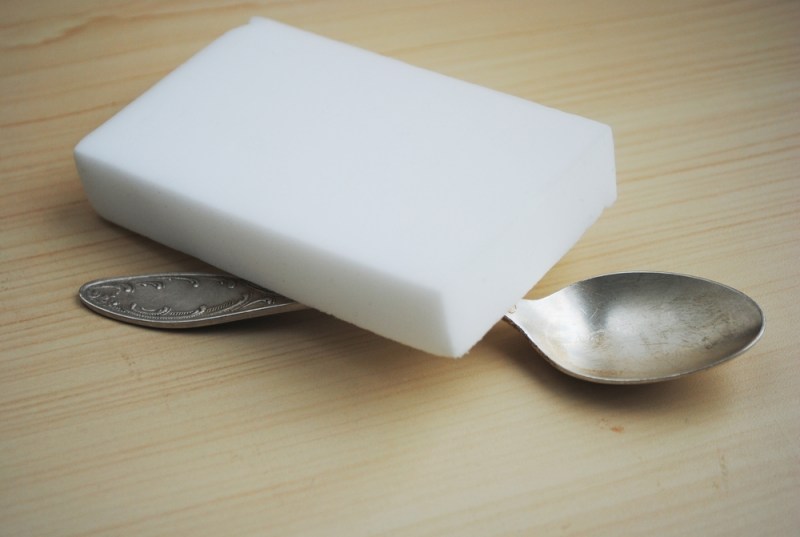Magic Erasers, a product developed by Mr. Clean, has been on the market for over 20 years. It’s “magic” ability to rid surfaces of hard to scrub grime like crayon, marker, and grease have a great appeal to parents of toddlers who can turn any surface into artistic expression. Their cleaning properties also apply to eco-conscious folks because they don’t contain any chemicals. But their price point in relation to their short lifespan can be frustrating. However, there’s a cheaper way to get the same effect of the eraser without breaking the bank.

What Is The Magic Eraser?
Obviously, this sponge-like product isn’t magical because David Copperfield doesn’t need to come over in his apron and rubber gloves to help you clean. It’s scientific!
The eraser is made of melamine foam. Melamine is a simple organic base. When combined with formaldehyde, it creates a resin that, when cured converts into a foam. This foam is a hard, glass-like surface that cleans like a fine sandpaper.
Despite containing the otherwise dangerous formaldehyde, its toxicity is neutralized when combined with melamine.

If you’re wondering how a “foam” can also be “glass-like”, we have to look at the microscopic level of the sponge-like foam. It is called an open-cell foam. When all the ingredients are mixing, air is forced into the base. As the resin is curing, the air pockets explode opening and loosening the hard outer casings of the resin. The casings, the part that is like glass, disperse into tendrils that stay woven together instead of one solid block. These strands have the strength properties that clean but their open pattern gives it the flexibility of a sponge.

A melamine molecule! molekuul_be / Shutterstock
How Does Melamine Foam Work?
Those aforementioned tendrils leave lots of air pockets in between them. These air pockets not only give it the spongy texture, but it’s also why it cleans so well. Dirt, grime, handprints, marker, and grease are all absorbed into those pockets.
It is recommended that you wet the sponge before wiping but that’s not totally necessary. Water helps the absorption of the dirt particles from your wall but isn’t what actually loosens them; It’s the basic tenets of melamine foam which does the heavy cleaning.

Where To Use Melamine Foam?
There are a myriad of surfaces where hard to scrub grime may accumulate that the foam does seem to magically clean.
- Porcelain tubs
- Sinks
- Baseboards
- Cabinetry
- Countertops
- Walls
- Vents
You want to be cautionary when using it on:
- wood surfaces
- high-gloss paint finishes
Remember that although squishy, the melamine foam is made of those resin tendrils and does act like fine sandpaper which can potentially dull or scratch those surfaces. When in doubt, test it on an inconspicuous area of what you want to clean beforehand.

How To Acquire Cost-Effective Melamine
The Magic Eraser is an amazing product that saves lots of parents from having to describe their homes as being “lived in” to justify the little handprints and ill-placed masterpieces all over. However, it disintegrates quickly like a pencil eraser so you only get a few uses out of it. Also, Mr. Clean is simply branded melamine so you can buy generic melamine for a fraction of the cost.
- A 9-pack of variety sponges from Mr. Clean retails at Sam’s Club for $10.76. That’s $1.20/sponge.
- Conversely, you can order 300 non-branded melamine sponges from Sponge Outlet for just $87.95. That’s only 30 cents per sponge! By buying in bulk and foregoing the bald man’s endorsement, you can save yourself a ton of money without foregoing quality.
- If you don’t want to shell out nearly $90, Amazon offers 20 sponges for $8.95 which is 45 cents.

There is no need to repaint or tirelessly scrub grimy surfaces. There’s no need to cry when little Mary Jane decides to create her self-portrait on your walls. Melamine foam is a sure-fire way to erase everything – even if it isn’t magical.
